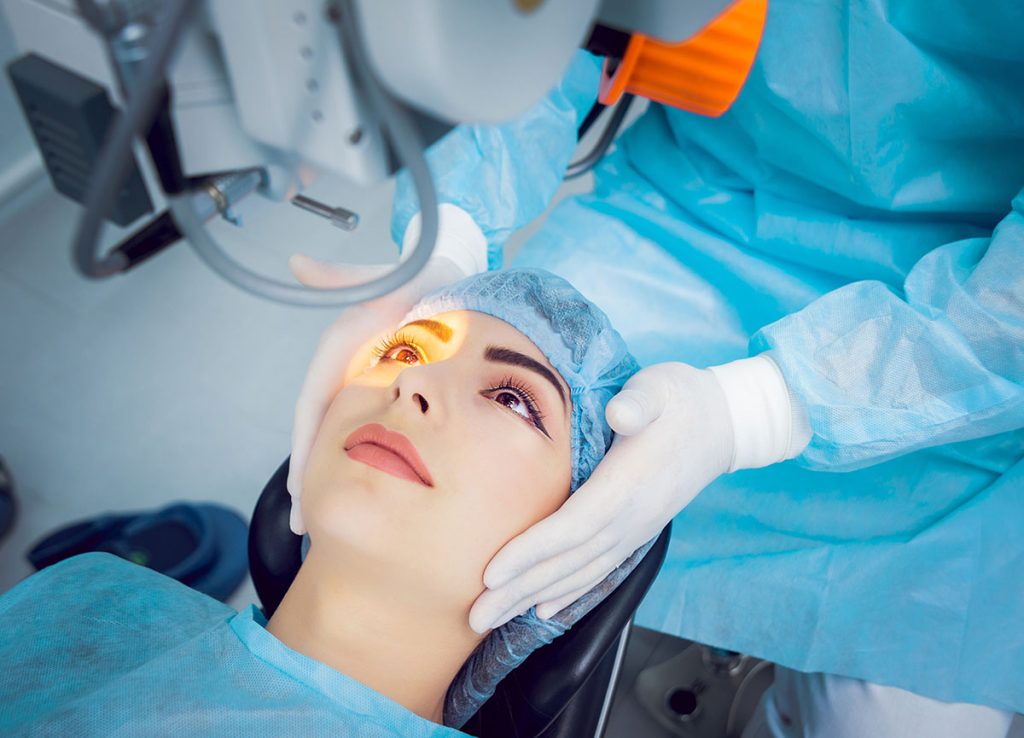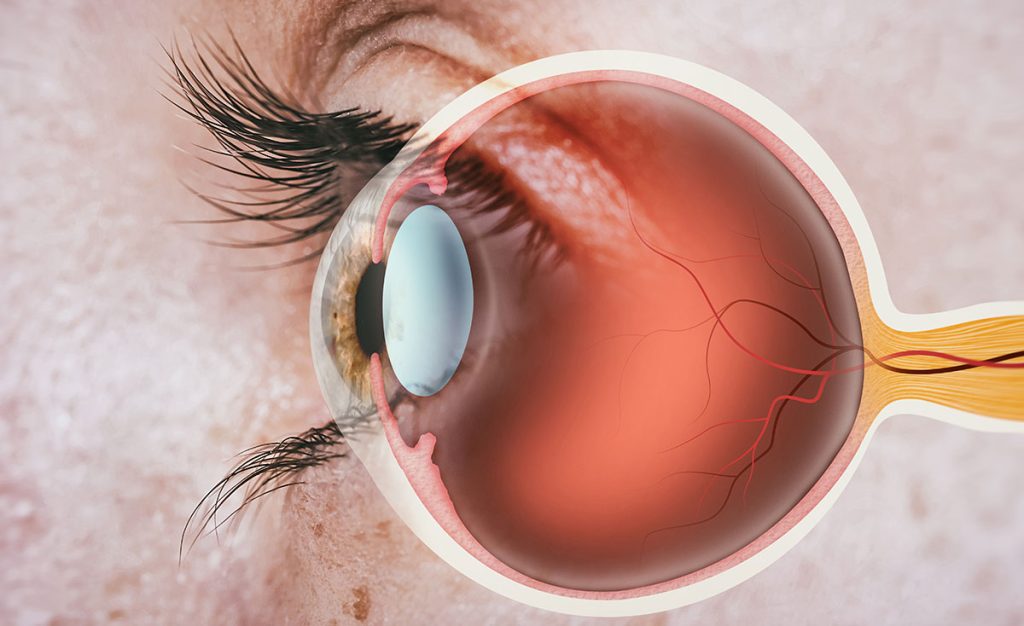Eye Surgery Options in Baltimore
Also serving Pikesville, Catonsville, Glen Burnie, & Rosedale

The outstanding ophthalmologists at Elman Retinal Group perform a variety of important eye procedures and surgeries for our patients. When a problem arises in the retina, prompt medical attention is warranted to preserve the patient’s vision in the long term. Below is a list of some of the retinal conditions our eye doctors regularly treat. Click the video links to learn more about the specific procedures.
Intravitreal Injections of Medication
Wet AMD, the more serious form of age-related macular degeneration, is usually caused by fluids like blood leaking into the macula. Vision is lost quickly to wet AMD, so injections of anti-VEGF medication like Avastin, Lucentis, or Eylea (which help to block the production of new leaky blood vessels) are necessary to slow the progression of the disease. Video
DME (diabetic macular edema) is a leading cause of blindness that affects people with type 1 or type 2 diabetes. Blood sugar spikes harm the blood vessels, in turn causing fluids to leak into the eye. Anti-VEGF medication can help to preserve vision. Video
CME (cystoid macular edema) is a condition where cystoids, or tiny sacs, develop on the macula, blurring central vision. Anti-VEGF injections can help to alleviate this problem. Another solution is periocular injection of steroids. Video
CRVO (central retinal vein occlusion) occurs when the retina’s primary vein becomes blocked. Consequently, blood seeps into the retina, downgrading vision quality. Anti-VEGF injections can help to preserve vision. Video
BRVO (branch retinal vein occlusion) is similar to CRVO, except that the obstructions are in the branches of the vein rather than the main vein itself. Again, anti-VEGF injections have proven useful for preserving vision. Video
Vitreomacular adhesion is a condition wherein the vitreous becomes unusually stuck to the retina. While this condition was formerly treated with surgery, an FDA-approved drug called Jetrea has been found to sometimes be successful in releasing the vitreous from the retina. Video
Retinal Tear/Detachment Repair

When the vitreous (the gel that fills the eye) tugs at the retina at the back of the eye, this can lead to a retinal tear. A tear can cause some minor visual problems (flashes of light, floaters, and reduced field of vision) and may eventually develop into a retinal detachment — a more serious condition. A retinal tear can be treated with a couple of procedures:
- Photocoagulation, a laser surgery that slightly burns the specific part of the retina so scar tissue forms to seal the tear. Video
- Cryotherapy, which uses cold temperatures to create scar tissue that seals an emerging retinal tear to close the hole. Video
Retinal detachment occurs when the retinal tissue (which transmits pictures to the brain) separates from the back of the eye. It is most likely to happen to patients with diabetic retinopathy. This is an emergency that warrants quick surgery, which can be handled via one of three approaches:
Vitrectomy
Macular pucker occurs when scar tissue forms on the macula, or center of the retina. This puckering can cause central vision to appear distorted or blurry. A vitrectomy can remove the abnormal tissue for clearer vision. Video
Macular hole is a rare condition in which a small hole develops in the macula, usually in older age. Because a macular hole can disrupt central vision and make everyday tasks more challenging, ophthalmologists recommend closing the hole with vitrectomy. Video
Floaters, or vitreous opacities, are floating objects in the vitreous that can appear as spots, specks, or webs in your vision. If floaters are substantial enough, they can be cleared out with vitrectomy.
Proliferative vitreoretinopathy, a multiplying of retinal cells with scar tissue, affects about 5% to 10% of people who have previously had retinal detachment repair. Vitrectomy can help repair this complication.
Vitrectomy may also be performed to help diagnose ocular inflammatory disease or neoplastic disease.
Photodynamic Therapy
Proliferative diabetic retinopathy is an advanced stage of diabetic retinopathy in which blood vessels begin to grow on the surface of the retina. Scatter laser treatment can help to shrink these blood vessels to minimize the effects. Video
DME (diabetic macular edema), characterized by swelling in the macula, can be treated with lasers to help reduce the chances of visual harm in the coming years. Video



